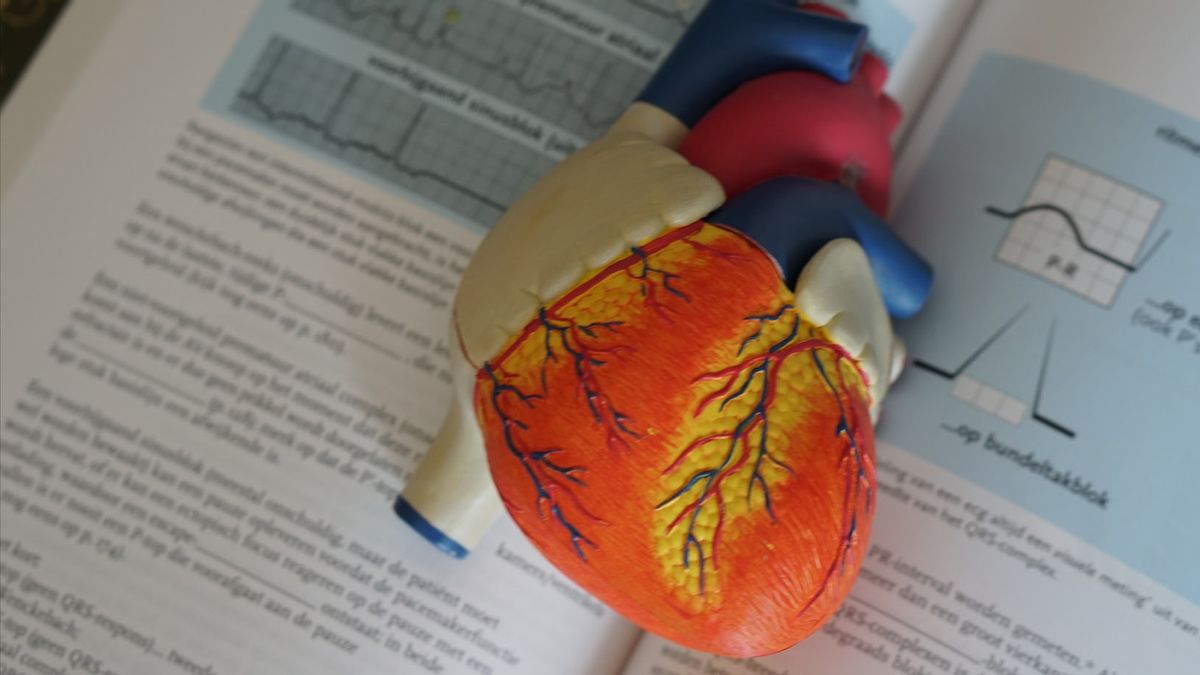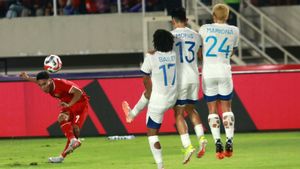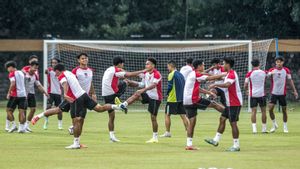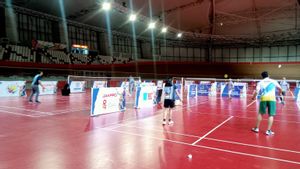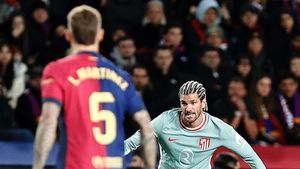JAKARTA - Chairman of the Central KONI, Lt. Gen. TNI (Ret.) Marciano Norman, spoke about a number of athletes who had heart attacks while exercising.
Heart attacks, said Marciano, citing the WHO, were the number 1 killer in the world until 2019. People who are synonymous with healthy sports also have many heart attacks.
"We have just been reminded how Denmark midfielder Christian Eriksen, a very bright footballer, during Euro 2020 suffered a heart attack," Marciano said in the 'Healthy Heart for Athletes and Sports Activists' webinar broadcast on the VOI YouTube channel, Thursday, 1 July.
"Soon we were reminded that the legendary Indonesian badminton athlete, Markis Kido, also had a heart attack while playing in Tangerang," he continued.
Markis, the gold medalist at the 2008 Olympics, could not be helped. After some time, Indonesian footballer Ricky Yakobi also experienced the same thing when playing with his friends at Senayan.
"For this reason, doctors pay attention to how our outstanding athletes as well as sports players and the general public can avoid heart attacks because of the lack of how to provide first aid for those affected by this attack," said Marciano.
So how exactly is the adaptation of the heart in athletes?
Member of the Indonesian Cardiovascular Doctors Association (PERKI) dr. Vito Damay said that athletes are not a profession that can be taken for granted, but must be taken seriously.
He explained, the heart consists of muscles that are automatically moved, there is an electrical heart that can pump oxygen throughout the body.
According to this former fencing athlete, when the athlete is inexperienced, the heart beats faster. In contrast to years he was calmer.
"So the heart can be trained. When we start competing, our hearts start beating again because of adrenaline. But when we have been practicing for a long time our heart rate is not as fast as people who have never practiced," he said.
"That's why those who have entered the national training if we touch their heart rates are lower than normal people," he continued
According to dr. Vito, don't be surprised if the athlete's heart rate only beats 50 times per minute, whereas the normal range for humans is 60-100 per minute. Because athletes can only 40-50 per minute at rest because they have adapted to the amount of physical activity carried out.
"So the adaptation of the heart is different from the type of exercise," he said.
Heart and blood vessel specialist, dr. Radityo Prakoso, conveyed how as a layman you can help people with cardiac arrest.
He said the recovery of a person with cardiac arrest will decline if no help is given over time.
"In the first minute of help, the survival can be between 21-36 percent, you can return to ROSC (Return of Spontaneous Circulation) or you can feel the pulse again for 10 minutes and the signs of circulation persist. If you leave it for the next 20 minutes, it will decrease by only 4.6 percent, "said Dr. Radityo in the same webinar.
Meanwhile, at 53 minutes, it was 100 percent certain that he would die if his closest friends did not help. And this was investigated by GOTO with a sample of 17,238 cases.
In addition, cardiac district expert dr. Sunu Budhi Raharjo said, when compared from the falling position between Markis Kido and Christian Eriksen, they were in the same position, from standing to falling face down.
According to him, it was caused by hypertrophic cardiomyopathy. Namely there is a thickening of the middle heart muscle that limits the left and right heart.
"So when it happens, there are 2 possibilities for him to experience, one is because of the thickening of the blood flow path to the aorta during exercise he will collapse so there is no blood to support because it is covered by thickened muscle flow. Second, thickened tissue or vibrating tissue will cause a risk The occurrence of arrhythmias is dangerous. I think this is an important point for cases that occur. Over Arrhythmias, "he said.
Meanwhile, a cardiologist, dr. Ade Meidian Ambari explained, sudden cardiac arrest (SCD) is an unexpected death caused by cardiovascular causes.
Sudden cardiac arrest occurs when the heart stops beating or does not beat adequately to maintain perfusion and life. Then there is a thickening of the structure because the heart is forced to exercise.
To anticipate cases of heart attack in athletes, dr. Ade suggested that KONI perform a physical examination on the athletes concerned. So, it can be known the cause of the athlete has a history of heart disease.
"So I propose to KONI is a physical examination. So look for a family history of heart disease, whether anyone died of heart disorders, whether during the physical examination there are abnormalities or not we can hear later. The most important thing is the electrocardigram (ECG) examination," said dr. Ade.
The English, Chinese, Japanese, Arabic, and French versions are automatically generated by the AI. So there may still be inaccuracies in translating, please always see Indonesian as our main language. (system supported by DigitalSiber.id)
